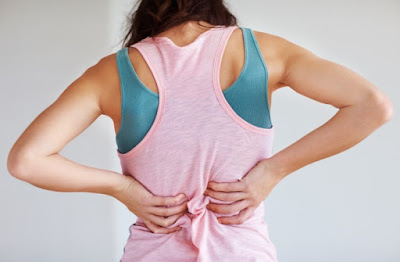Fortunately, science-backed alternative options exist to treat sleep apnea. Bear in mind, however, that since the root causes behind sleep apnea vary, a remedy that cures one person might do nothing for another. “You need a combination that’s right for the individual,” Pascualy says. Experiment with some or all of these, and see which work for you.
9 holistic ways to treat obstructive sleep apnea
1. Trim down. Shedding about 10 percent of your body weight can send sleep apnea into total or near-total remission, according to a 2009 Archives of Internal Medicine study involving more than 260 obese, diabetic participants with sleep apnea. In fact, losing just 5 or 10 pounds improves symptoms, while gaining 5 to 10 pounds worsens them.
2. Avoid alcohol. As a sedative, alcohol deepens sleep, relaxing the muscles and making them more prone to collapse, says Pascualy. Alcohol also depresses breathing and makes it harder for your brain to rouse you from sleep, so the apneas become more frequent and severe. Avoid alcohol six hours or more before sleep. For similar reasons, avoid sleeping pills, and talk to your doctor about any headache or allergy medications.
3. Quit smoking. Cigarettes increase swelling in the upper airway and thereby exacerbate sleep apnea, says the National Sleep Foundation.
4. Clear your sinuses. If your nose is chronically stuffy, identify potential allergens in your environment (pollen, dust, pet dander) or intolerances in your diet (dairy, wheat, or mucus-producing foods like bananas). An allergy doctor can screen for sensitivities, or you can keep a log of the foods you eat, your environment, and congestion levels. You might also try elimination diets, in which you cut out suspect foods for a couple of weeks, and see if the stuffiness eases. (To find out how to start an elimination diet, visit naturalsolutionsmag.com and type “Elimination Diet” into the search box.) Once you’ve identified any allergens, you can work on avoiding them. At night, you can further clear your sinuses, Pascualy suggests, by rinsing them with a neti pot or saline sprays. (For more on sinus health, see page 25.)
5. Quell inflammation. Low levels of inflammation are normal: When you have a cold or cut your finger, the immune system produces inflammatory cells to fight infection or heal the wound. However, for reasons not entirely understood, diets high in fat, sugar, or processed foods, and a sedentary lifestyle can cause chronic inflammation. This has been linked to sleep apnea, as revealed by several new studies, including one in the July 2009 issue of the journal Thorax. Although researchers are still unraveling chronic inflammation’s connection to sleep apnea, “inflammation might impair the function of nerves, including the hypoglossal nerve, which controls the tongue and keeps it from falling back into the airway,” Pascualy says. Shun inflammation-causing saturated fats (limit them to 10 percent of your daily calories), trans fats, refined grains, excess sugar, char-grilled foods, cigarette smoke, and chronic stress.
6. Strengthen your throat muscles. “The muscles of the airway are like the muscles in the arm or leg,” Fong explains. “They can get weak without proper exercise or with age.” When that happens, the airway structures don’t stay in their proper anatomical position and collapse into the air passageway. But, says Fong, by strengthening, toning, and reeducating the airway musculature, including the tongue, jaw, lips, and soft palate, you can alleviate, or even eliminate, the condition.
Fong (a former snorer) developed a series of exercises to rebuild throat musculature. One exercise, for instance, has you keep your tongue on the floor of your mouth, with your lips closed, for about 10 minutes, twice a day. Fong says that most of his patients’ sleep apnea disappears within one month of starting these exercises. (Find more information, visit silentnighttreatment.com.)
Something else to try: Play the didgeridoo. A 2006 study in the journal BMJ found that playing this long, wooden wind instrument significantly improved sleep apnea and snoring in people with moderate apnea. Native to Australia, the didgeridoo requires circular breathing in which you inhale through the nose and exhale through the mouth, thereby retraining the upper-airway muscles.
Although larger studies are needed, the didgeridoo option surmounts the compliance problems that plague CPAP and dental devices. “The participants were highly motivated,” wrote the researchers, “and practiced, on average, almost six days a week, which was even more than the protocol asked for.” No studies have been done on other instruments, but theoretically, any activity involving circular breathing might help.
7. Try acupuncture. A 2009 study at the Yueyang Hospital of Integrated Chinese Medicine and Western Medicine, Shanghai, found that three to five acupuncture sessions a week, for a total of 30 sessions, reduced the number of apneas each night. Additionally, in a 2007 placebo-controlled study in Sleep Medicine, one acupuncture treatment a week (for 10 weeks) improved sleep apnea’s severity by 79 percent. It’s thought that by removing blockages in the body’s qi, or energy flow, acupuncture restores healthy function to the nerves and muscles controlling the upper airway.
8. Sleep on your side. Lying on your back makes it easier for the tongue and other tissues to fall back and block the airway, says Pascualy. Some sleep apnea sufferers even sew a pocket into the back of their pajamas and place a tennis ball in it to prevent themselves from rolling onto their backs. Elevating your head with extra pillows may also help.
9. Get moving. In a May 2009 Sleep study, a four-month exercise program (three 60-minute sessions per week) significantly reduced the severity of participants’ obstructive sleep apnea, most likely by improving the function of blood vessels and nerves-including those that regulate breathing.














